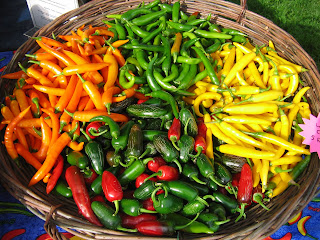for the love of Quince
Apple of Love
There is one fruit that has a special place in my kitchen and has so for a number years although its true history dates back to ancient Greece where it was held in such high regards that a Greek bride would nibble a quince to perfume her kiss before entering the bridal chamber, "in order that the first greeting may not be disagreeable nor unpleasant"
If you have ever tried to eat a raw quince you will be disappointed as they are tart and astringent and do need to be be cooked – although a novel way to solve this is to do what they do in South America, where a quince is used to play an informal beach toss-and-swim game, usually among young teens. When mixed with salt water a mature quince will turn its sour taste to sweet. The game is played by throwing a quince into the sea. All players race to catch the quince and whoever catches it, takes one bite and tosses the quince again, then the whole process gets repeated until the quince is fully eaten. While this may not be as popular in the cooler waters of NZ during the Chilly autumn it may be a way to entice our younger generation to try the fruit of the love gods
The key with quinces is to put them time aside to prepare them, poached quinces, quince paste and jelly, quince pickles and quince cakes are just a small selection of what you can do with them and you will be rewarded with there lingering frangrance and aroma long after they have been sealed in there preserving jars
Quince Paste
Ripe Quince
Sugar
Water
2 T Lemon Juice per 4 quince (optional but recommended as it helps with the setting of the pectin)
Method: Peel and core quince, like you would an apple, place the seeds and skins in a muslin bag and put into a large pot. Cut quince into large chunks and cover with enough water to cook through until soft enough to pierce. Drain water and puree the fruit through a sieve, with a masher or in a food processor. Weigh the puree and add equal amounts of sugar in weight as the puree in a pan and cook (while stirring constantly) until the mixture starts to get very thick. If you want a thick quince paste that can be sliced, cook until the mixture starts to pull away from the pan. Be careful, when fully boiling, it can be very hot and spurt out and stick to your skin so try to cook it on the lowest heat possible to avoid being scalded. The best test is, if the paste does not come together again when you create a line through the mixture with a spoon, then it is done. Pour paste it into a non-stick pan to cool or a pan lined with good parchment paper or even in individual muffin pans. Keep in a cool dark place



Comments
Post a Comment